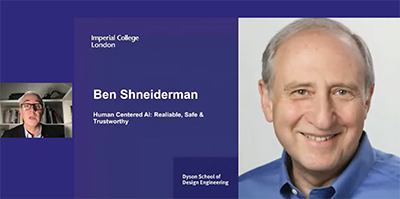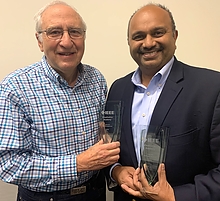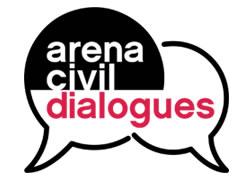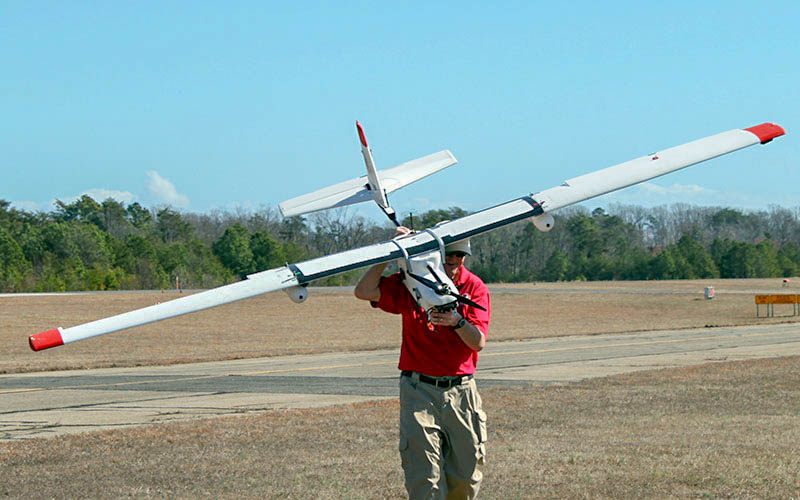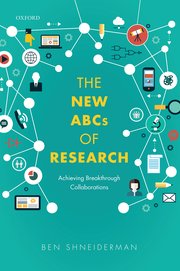News Story
Shneiderman art exhibition at National Academies opens Oct. 16
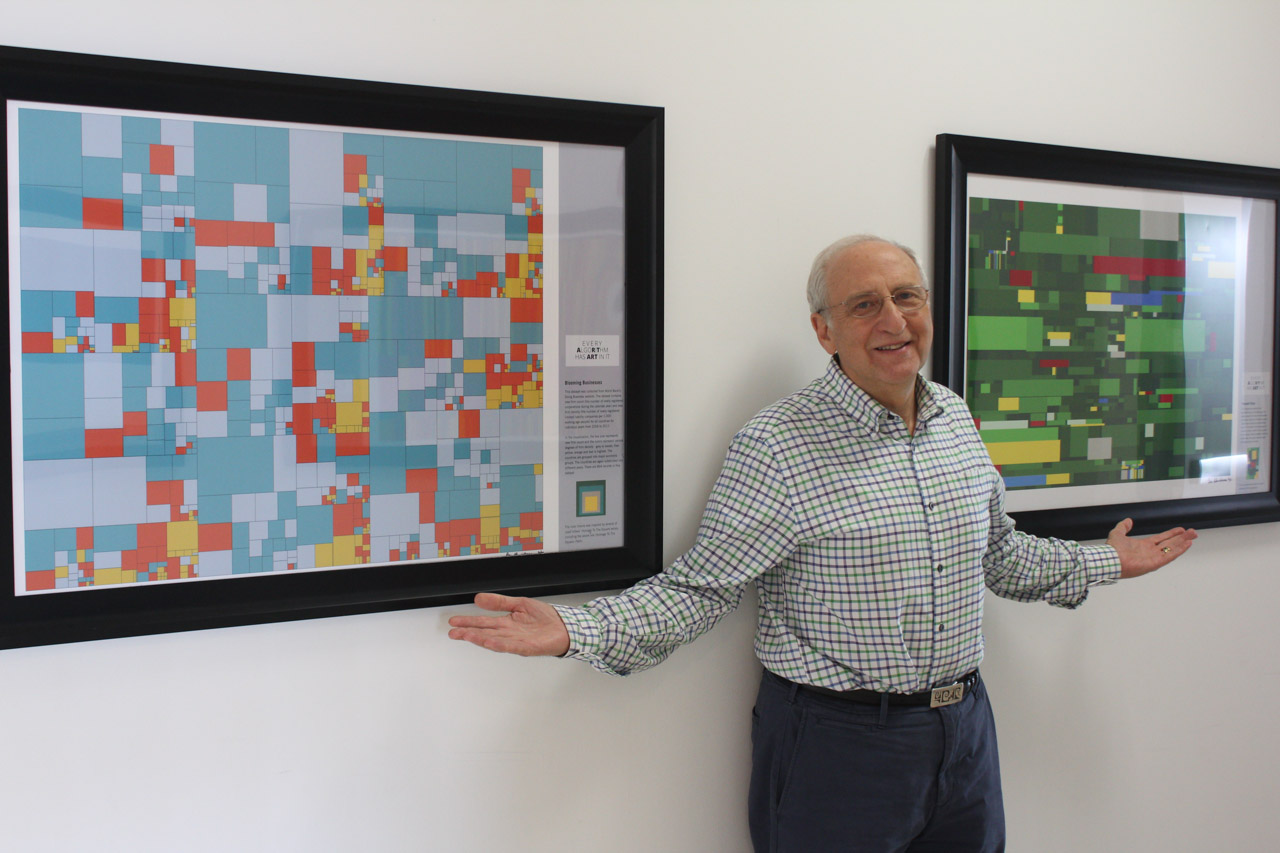
Ben Shneiderman with two of his Treemap Art Project pieces.
From visually depicting points scored and personal fouls of every player in the NBA to detailing the production output of hundreds of U.S. companies, computer-generated treemaps are a potent tool for taking massive amounts of data and producing a compact roadmap of usable information. Treemaps not only provide a wealth of information for decision-makers worldwide, they’re also attractive to look at.
Shneiderman, a renowned data visualization expert whose work led to Spotfire’s commercial success, pioneered the treemap technique in the early 1990s. Treemaps are used to organize and visualize hierarchical (tree-structured) data as a set of nested rectangles. In this exhibition, he has stripped the text from his treemaps, allowing viewers to consider their aesthetic properties. The featured treemaps are based on data from a range of topics including global population, popular music, carbon emissions, economic growth, popular TED talks, airport activity, and basketball data.
“Although I conceived treemaps for purely functional purposes (understanding the allocation of space on a hard drive), I was always aware that there were aesthetic choices in making appealing treemaps, such as design, color, aspect ratio, and the prominence of borders for each region, each hierarchy level, and the surrounding box. In addition, certain treemaps are inherently interesting because of the data displayed or patterns revealed,” says Shneiderman, who also holds an appointment in the University of Maryland Institute for Advanced Computer Studies. Shneiderman worked closely with Kazi Rahman, ’13, master of information management, to prepare the images and the exhibition catalog.
Shneiderman's artistic influences include the Op art (optical art) movement of the 1960s, as well as the work of Piet Mondrian, Josef Albers, Mark Rothko, Paul Klee, Kenneth Noland, Barnett Newman, and Hans Hofmann.
October 16, 2014 Opening Reception
5:30-6:00 p.m. Ben Shneiderman will lead gallery tours
6:00-8:00 p.m. D.C. Art Science Evening Rendezvous
• Welcoming remarks and community sharing time. Anyone in the audience working at the intersection of art and science will have 30 seconds to share their work.
•Panelist presentations
o Jonah Brucker-Cohen, assistant professor of digital media and networked culture, Lehman College, City University of New York
o Jon Froehlich, assistant professor, Department of Computer Science and affiliate assistant professor, College of Information Studies, University of Maryland
o Manuel Lima, designer, author, researcher, and lecturer, New York City
o Ben Shneidermanmember of the National Academy of Engineering and Distinguished University Professor, University of Maryland
o JD Talasek, facilitator; director, Cultural Programs, National Academy of Sciences, Washington, D.C.
• Discussion
8:15-9:00 p.m. Ben Shneiderman will lead gallery tours during a reception.
Location
National Academies Keck Center
500 Fifth Street, NW
Washington, DC 20001
Cost
Free and open to the public.
Registration and photo ID required.
http://www.cpnas.org/events/daser-101614.html
The exhibit will be on view from Oct. 16, 2014 through April 15, 2015 at the National Academies Keck Center by appointment. Email aquinn@nas.edu to make an appointment. The exhibit is a project of the Cultural Programs of the National Academy of Sciences.
Every AlgoRiThm has ART in it: Treemap Art Project Exhibition
Exhibition catalog with essays by Ben Shneiderman, Manuel Lima and JD Talasek
D.C. Art Science Evening Rendezvous
Background information on Shneiderman’s Treemap art
—This article courtesy of Abby Robinson. For more information, contact Abby Robinson, 301-405-5845, abbyr@umd.edu
Published October 3, 2014
